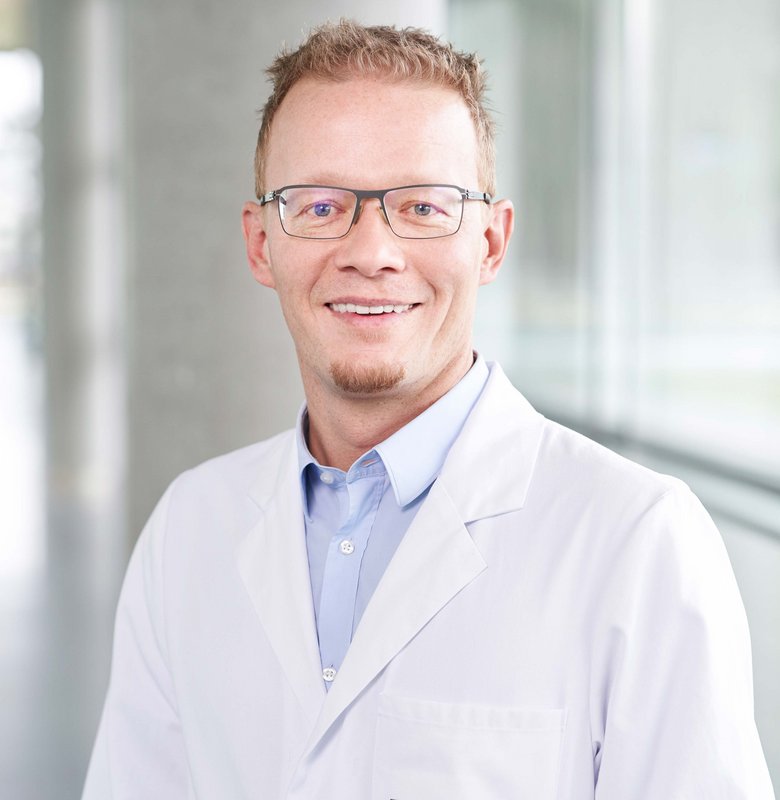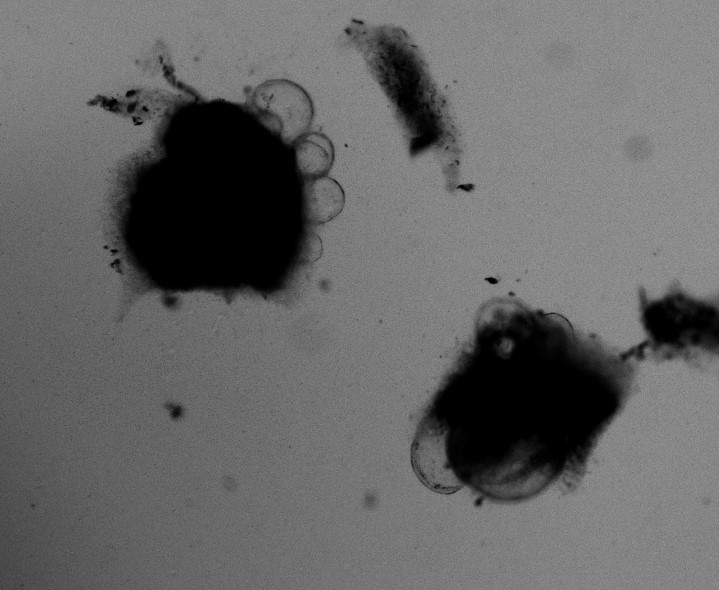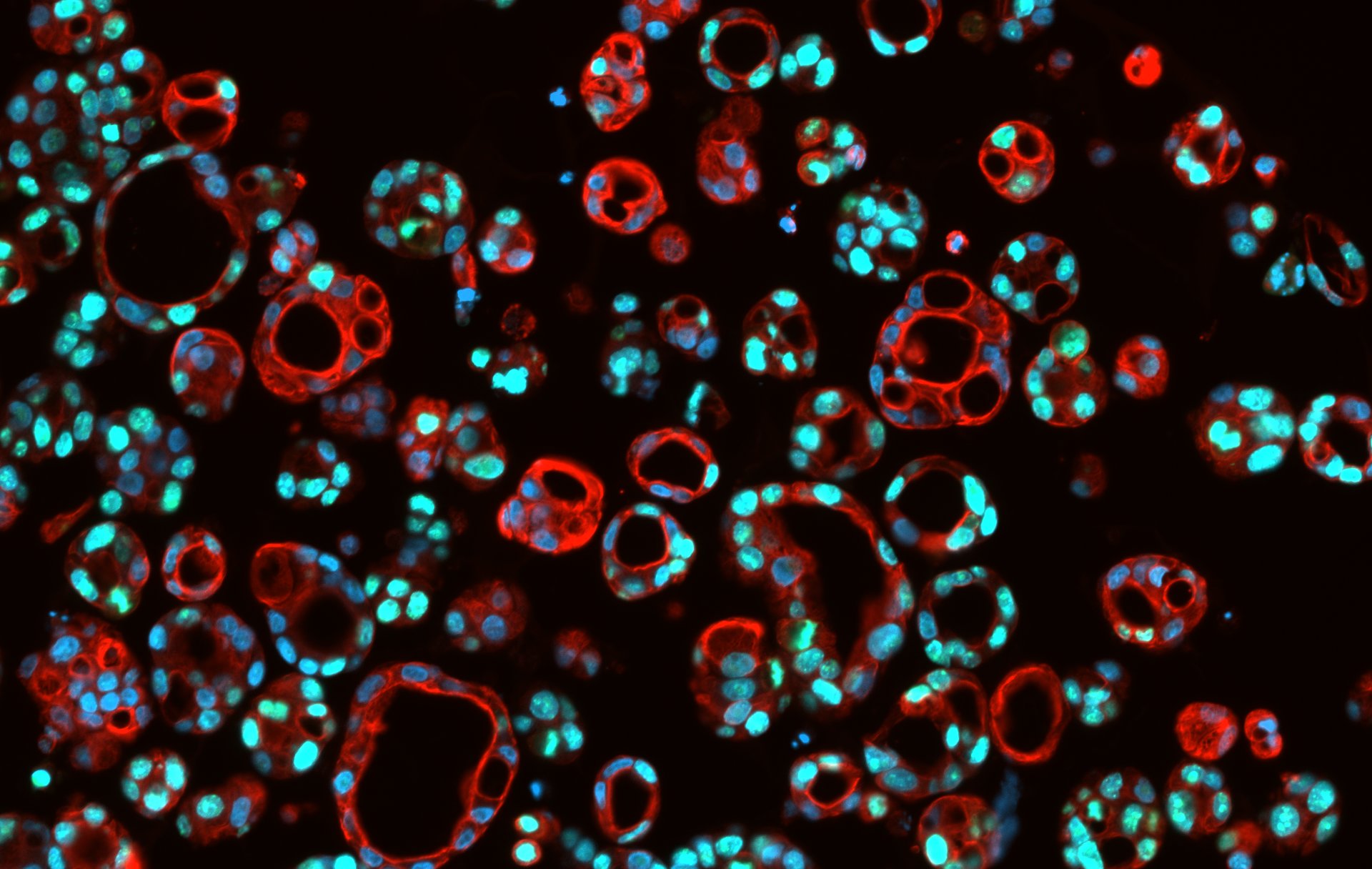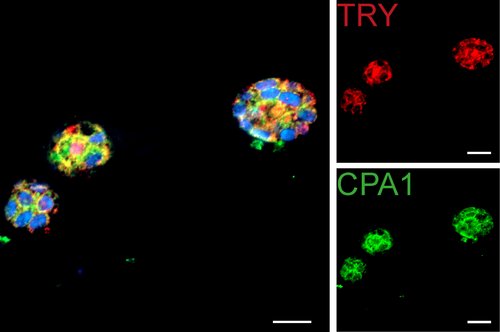 Prof. Dr. Alexander Kleger and his team at Ulm University Hospital are researching the biological processes that lead to pancreatic cancer. © University Hospital Ulm
Prof. Dr. Alexander Kleger and his team at Ulm University Hospital are researching the biological processes that lead to pancreatic cancer. © University Hospital UlmProf. Dr. Alexander Kleger works on translational medicine at the Ulm University campus: the gastroenterologist and pancreas specialist is Head of the Interdisciplinary Pancreatology Section at Ulm University Hospital and for the past year has also been Director of the Institute of Molecular Oncology and Stem Cell Biology.1)
Using new technologies such as organoid models and stem cell-based systems, he investigates the development of pancreatic cancer in order to improve patient-specific treatment. His research focuses on pancreatic ductal adenocarcinoma (PDAC), the most common form of pancreatic cancer.
Despite accumulated knowledge and increasing research, therapeutic breakthroughs in this devastating disease, which has a high mortality rate and growing case numbers, have so far failed to materialise. The aggressive tumour biology and (usually) late diagnosis of PDAC mean that developing new treatment strategies is one of the greatest challenges in oncology research. Model systems such as organoids are an essential building block for investigating the onset and progression of the disease and its resistance to therapy as well as for developing possible therapeutic approaches. Kleger is continuing the tradition of excellent pancreatic cancer research in Ulm: he has held a Heisenberg Professorship for Molecular Oncology since 2020 and was recently awarded the German Cancer Award for Experimental Research.2)
After years of preparatory work, Kleger and his team recently managed to cultivate all three main cell types of the pancreas simultaneously from pluripotent stem cells.3) This was a notable success because as he says: "Until now, there were no reliable methods for "producing" acinar cells at all, let alone producing them simultaneously from the same precursor cells as the other two cell types." Acinar cells produce and secrete their enzyme-rich digestive juice into the small intestine (i.e. they are exocrine), where they break down the fats, carbohydrates, proteins and nucleic acids in our food. This breakthrough is significant because 98 percent of all pancreatic cancers affect the exocrine part of the glandular organ. This in turn accounts for the majority of the pancreatic tissue volume. As tumours that arise from the different cell types of the pancreas have different biologies, this model has the potential to contribute to a better understanding of the development of related tumours.
 From human pluripotent stem cells to acinar cells. (Source: Merz et al. Theranostics 13(6) 2023)
From human pluripotent stem cells to acinar cells. (Source: Merz et al. Theranostics 13(6) 2023)
Infobox: New 3D tools for biomedical research
Anyone like Kleger who comes from stem cell research quickly finds themselves working with organoids, which bridge the gap between two-dimensional cell cultures and animal models. Organoids are tiny, three-dimensional human cell structures developed from embryonic or pluripotent (induced) stem cells in the culture dish. They model organs, which they resemble in terms of cell composition and function. To produce such organoids, the stem cells are exposed to a cocktail of nutrients, growth factors and signalling molecules. These components are added in a specific composition and chronological order. If the stem cells are grown in the right conditions to stimulate and promote growth, they multiply and change and ultimately form the corresponding organoids.
For around two years, the Organoid Core Facility, a central service facility at Ulm University Hospital, has been offering a service to establish and cultivate organoids from primary tumour tissue and test clinically relevant substances on these cultures. This creates a kind of biobank of various tumour entities (e.g. pancreas, intestine, breast or urological tumours).
The use of pipetting robots speeds up the production of organoids considerably. Nevertheless, results from organoid-based studies take too long to come through to usefully contribute to therapy decisions: "This must not take longer than three to four weeks," says Kleger. Although the first organoids form from the tumour cells in just a few days, producing a sufficient quantity of organoids to test various therapeutic agents then takes a further thirty days or more.
At present, the services of the Organoid Core Facility are mainly used by academic institutions. However, Kleger reports that there are already requests from industry.
 The black and white image shows how round organoid structures grow out of tumour fragments. © University Hospital Ulm
The black and white image shows how round organoid structures grow out of tumour fragments. © University Hospital UlmKleger and his team are able to use this pancreas model to investigate the effects of defective genes on the different cell types, which has been virtually impossible in other model systems up until now. If early changes in cancer development can be identified, biomarkers for early detection can potentially be derived from this, which in turn could enable diagnosis and treatment at an earlier, less aggressive stage. In addition, it is possible to test which therapeutic approaches are effective for which molecular changes.
Nevertheless, organoids are model systems that are neither vascularised nor properly innervated, and therefore by no means represent the complexity of real organs. The researchers are therefore trying to use bioprinters to study the tumours in their microenvironment, e.g., surrounded by connective tissue cells. They are hoping this will allow them to observe how the tumour communicates with its environment. This so-called "cross-talk" between the cells can, for example, make tumour cells even more aggressive. "We want to start identifying ways to interrupt this communication and thus find effective therapeutic approaches to improve patient survival," explains the expert.
The researchers in Ulm had the first indications of the potential clinical benefit of pancreatic tumour organoids when they ran laboratory tests on some that had been obtained from patients.4) The organoids were exposed to standard chemotherapeutic drugs and their response compared to the patients’ response to the treatment when they returned to the clinic after the initial staging. The responses showed a correlation of 89 percent.
Hair roots from patients with genetic tumour predisposition syndrome who came to hospital for screening were used to develop personalised ductal models of cancer by reprogramming the hair root cells into pluripotent stem cells. According to Kleger, this makes it possible to further investigate tumorigenesis and early tumour progression in a human model system.
 IF-stained organoids, courtesy of the University of Ulm © University of Ulm
IF-stained organoids, courtesy of the University of Ulm © University of UlmCurrent organoid systems are suitable primarily for gaining fundamental insights into biological processes and signalling pathways in the epithelium or for modelling simplified intercellular communication. "However, in order to understand more complex mechanisms such as the cell cycle or the activation of the immune system, mouse models are still required to capture the full complexity that organoids still lack," says the professor, referring to an (albeit small) study on tumour vaccination, which showed that mRNA vaccination helped certain pancreatic cancer patients to remain tumour-free after surgery. 5)-7) To put it another way, pancreatic organoids do not have a personalised immune system and only represent part of the pancreas’ physiological environment.8)
 Immunofluorescence-stained acinar organoids. Expression of the typical acinar markers trypsin (top right, red) and carboxypeptidase 1 (bottom right, green). Source: Merz et al. Theranostics 13(6) 2023)
Immunofluorescence-stained acinar organoids. Expression of the typical acinar markers trypsin (top right, red) and carboxypeptidase 1 (bottom right, green). Source: Merz et al. Theranostics 13(6) 2023)Research into the complex processes of tumour development is still in its infancy: although the mutational landscape of PDAC has already been described in large clinical trials, retrospective characterisation is limited to late stages of the disease.
Kleger also curbs expectations of what can be achieved by organoid technology, saying that only randomised, controlled clinical trials will show the potential of the models. The researchers from Ulm have received funding from German Cancer Aid for such a trial (called UNITEPANC) that aims to show whether organoid-based therapy is superior or at least equivalent to conventional therapy (standard of care). The trial, scheduled to run for at least four or five years and will involve six centres, has been approved but no patients have yet been recruited.